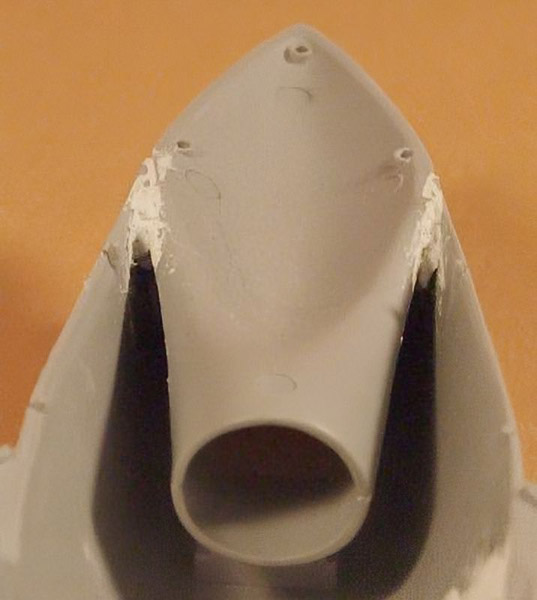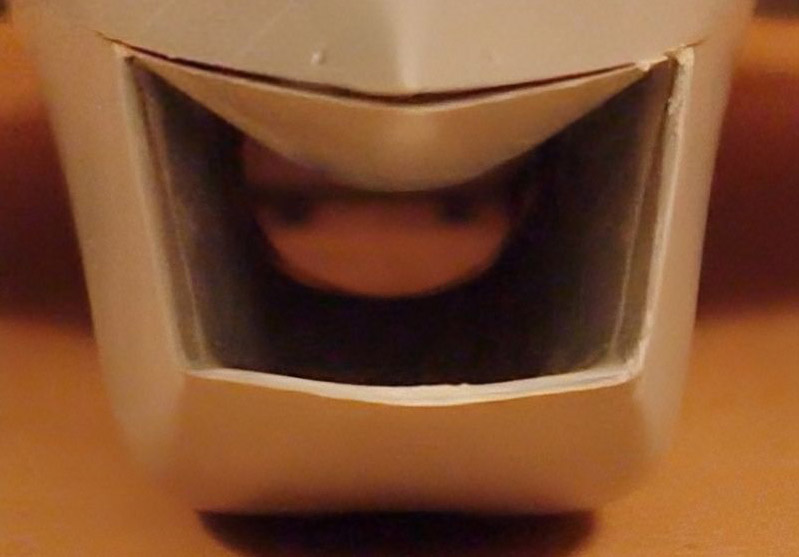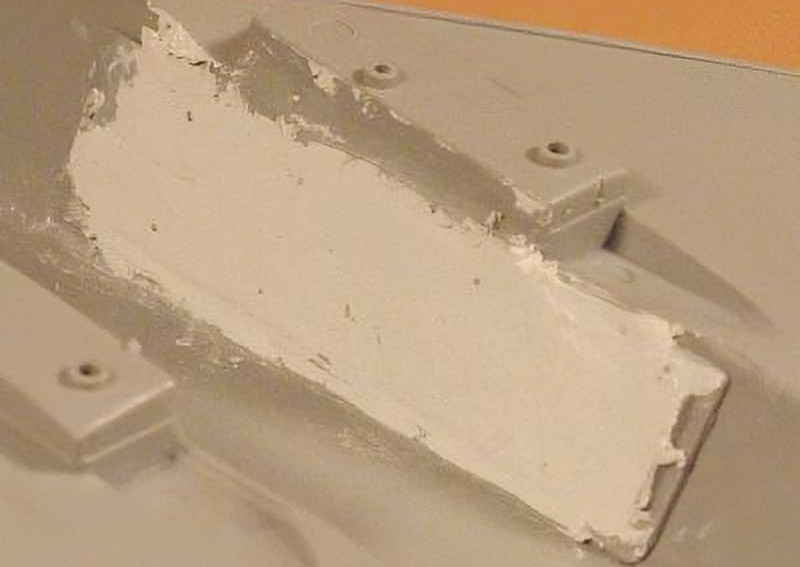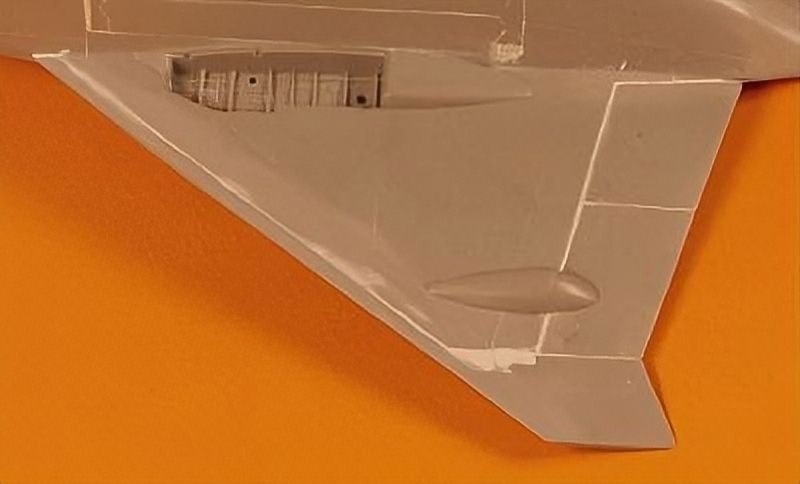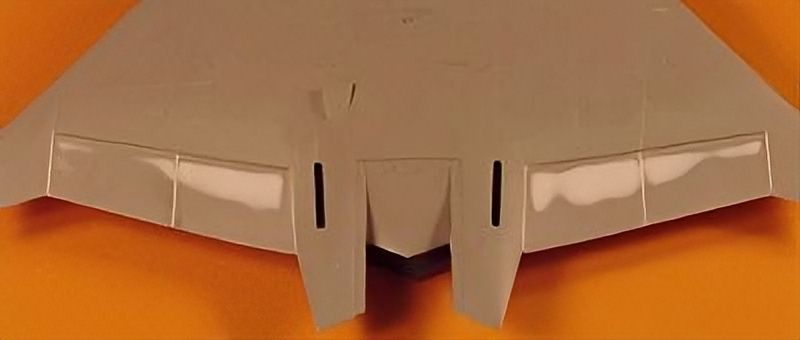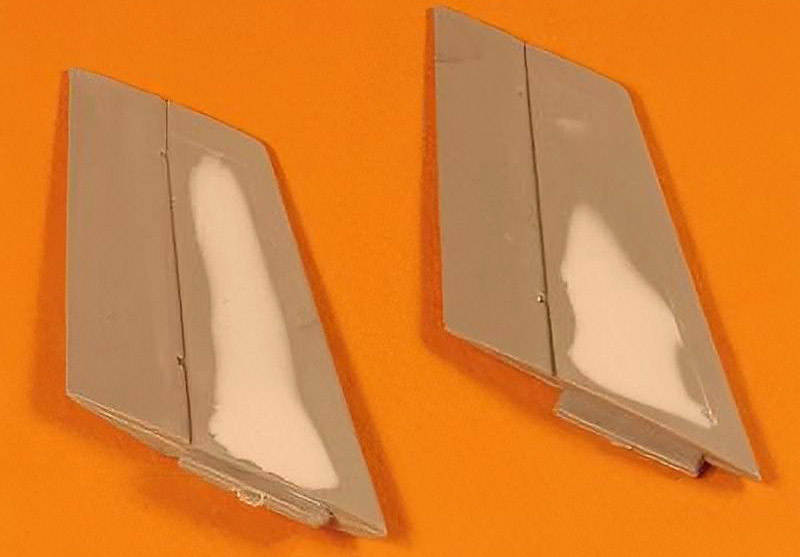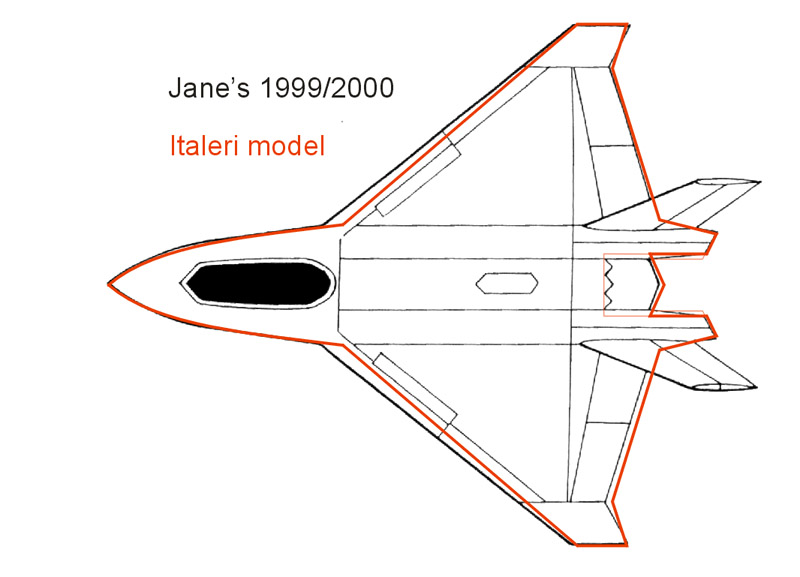Italeri 1/72 X-32 Joint Strike Fighter
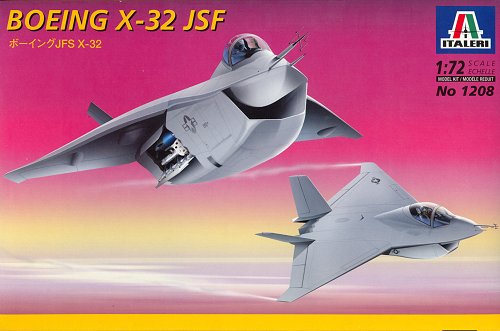
| The reason for buying this model is somewhat unusual: I wanted to know how Boeing had managed to create such an ugly aircraft. The few photos published by Boeing at that time didn't give me a complete picture of the aircraft. I thought that buying the model would be of some help, so I bought it right after it was released in Europe. I decided beforehand to build it straight out of the box, since my interest was largely about the looks, not the details.
Quite soon after the model's release it became clear that it has grave errors, that will take a lot of modifications to make it more or less correct. After a through shape analysis (shown below), I understood what was wrong with this model. When I saw this, I stopped construction. However, I still like the real thing, and I hope to build a correct X-32 model one day. |
